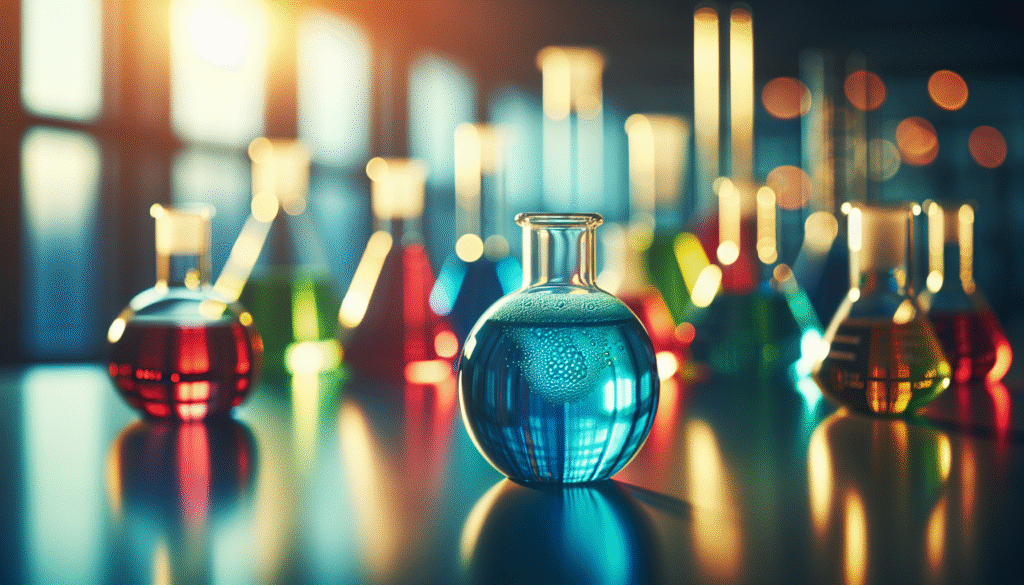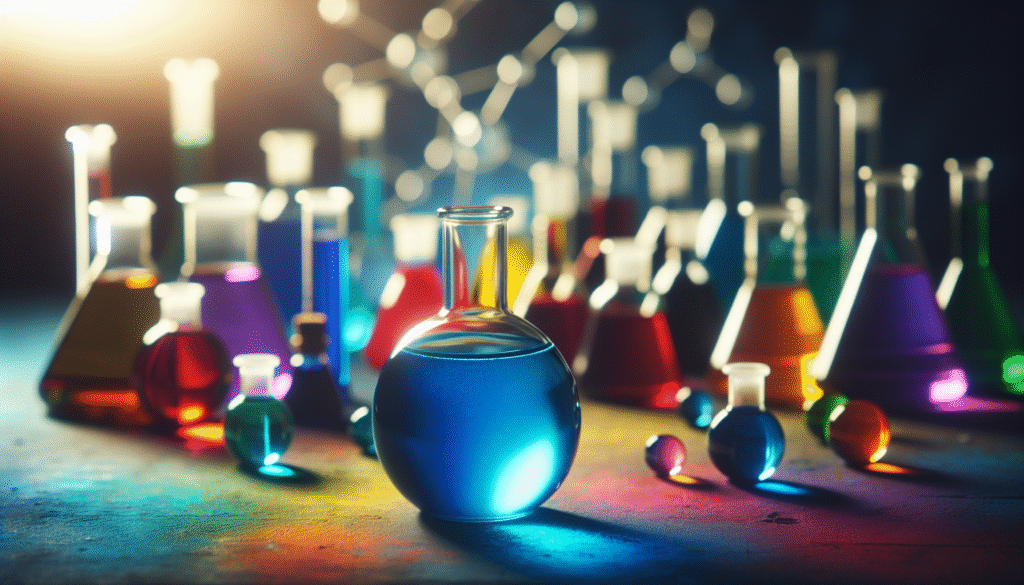
What do you know about Methylene Blue and its comparison to other dyes? Understanding the distinctions among various dyes can illuminate your choices in fields ranging from biology and chemistry to fabric dyeing and histology. In this article, you will delve into the characteristics, applications, and differences between Methylene Blue and other dyes.

Understanding Methylene Blue
Methylene Blue, a synthetic dye, has made significant contributions to various scientific fields since its introduction in the 19th century. It serves numerous purposes, from acting as a biological stain to being utilized in medical applications.
Chemical Structure
The chemical formula for Methylene Blue is C16H18ClN3S, and it belongs to the thiazine dye class. This structure lends itself to various staining and redox reactions. The molecule’s unique properties enable it to bind to certain biological substances, allowing for clear visualization under a microscope.
Applications in Science
Methylene Blue is primarily used in microbiology and histology. You might find it in:
- Staining Procedures: It is exceptionally effective in staining cell nuclei and certain tissues.
- Medical Uses: Methylene Blue has applications in treating conditions like methemoglobinemia.
- Diagnostics: It can serve as an indicator in various biochemical assays.
Understanding these applications helps you appreciate the versatility of Methylene Blue, marking it as a pivotal component in both educational and professional settings.
Other Dyes: A Brief Overview
It is essential to consider how Methylene Blue compares to other dyes commonly used in laboratories and industries. Different dyes come with their unique properties, applications, and limitations.
Categories of Dyes
Dyes can be categorized based on their source and application. Here are some common types:
-
Natural Dyes
- Derived from plant, animal, or mineral sources.
- Examples: Indigo (plant source), Cochineal (insect source).
-
Synthetic Dyes
- Man-made dyes designed for specific applications.
- Examples: Aniline dyes, Azo dyes.
-
Reactive Dyes
- Form covalent bonds with fibers, making them more durable.
- Commonly used in fabric dyeing processes.
-
Acid and Basic Dyes
- Acid dyes are typically used on wool and silk, whereas basic dyes are suited for acrylic fibers.
Exploring these categories informs you about the versatile applications of dyes across various industries.
Methylene Blue vs. Other Synthetic Dyes
When comparing Methylene Blue to other synthetic dyes, such as aniline dyes or azo dyes, certain characteristics come into play. The following section will encapsulate the key differences and applications of these dyes.
Color and Stability
Methylene Blue yields a deep blue hue and exhibits good stability under a range of pH conditions. Azo dyes, for instance, come in various colors and can provide intense shades but may exhibit less stability when exposed to light or heat.
Application in Biological Staining
Methylene Blue excels in biological staining due to its selective affinity for certain tissues and cellular components. In contrast, other synthetic dyes like Giemsa or Hematoxylin are also commonly used but have different staining properties and specific affinities, which makes Methylene Blue indispensable for certain applications.
Toxicity and Safety
One notable difference lies in their toxicity profiles. Methylene Blue is known to be relatively safe in low doses, which is vital for its medical applications. Other synthetic dyes can carry varying levels of toxicity that make them unsuitable for use in medical environments or with living organisms.
Advantages of Using Methylene Blue
Methylene Blue has several advantages that set it apart from other dyes, making it a preferred choice in certain scientific applications.
High Affinity for Biological Tissues
Its ability to bind easily with many biological tissues ensures excellent contrast in microscopic examinations. This affinity makes it particularly useful for staining cell nuclei, thereby enhancing visualization.
Antimicrobial Properties
Research has indicated that Methylene Blue possesses antimicrobial properties, making it valuable in treating various infections. Its effectiveness in low concentrations can reduce the risk of toxic reactions, adding another layer of advantage over some other dyes.
Reducing Agent
Methylene Blue acts as a reducing agent, facilitating various biochemical reactions. This property is beneficial in assays and experimental designs that require electron donation or redox reactions.

Disadvantages of Methylene Blue
While Methylene Blue has numerous advantages, it is vital to acknowledge its limitations to make informed decisions regarding its use.
Staining Duration
One disadvantage is the staining duration; Methylene Blue may require longer exposure times to achieve optimal results in staining procedures, especially compared to some synthetic dyes that stain quickly.
Potential for Background Staining
In applications involving histology, Methylene Blue may lead to background staining, making it challenging to achieve clear differentiation in some cases. This issue can detract from the specificity needed in some scientific evaluations.
Limited Color Range
Unlike some synthetic dyes that offer a broad spectrum of colors for staining, Methylene Blue predominantly provides a blue hue, limiting its application in types of analyses that require multiple colors for differentiation.
Comparative Analysis: Methylene Blue vs. Aniline Dyes
To better visualize where Methylene Blue stands against similar dyes, an analysis against aniline dyes provides clarity. Below, a breakdown highlights their differences:
| Feature | Methylene Blue | Aniline Dyes |
|---|---|---|
| Chemical Nature | Thiazine Dye | Aromatic Amines |
| Color Range | Blue | Various (red, yellow, green) |
| Biological Staining | High affinity | Variable affinity |
| Toxicity | Relatively low | Variable; can be toxic |
| Use in Medicine | Yes | No |
| Stability | Stable under various pH | Less stable under light/heat |
Understanding these differences assists you in making informed choices about which dye to use in specific scenarios, particularly in biological and medical fields.
Comparative Analysis: Methylene Blue vs. Azo Dyes
Azo dyes, another prominent category of synthetic dyes, offer a distinct palette and diverse applications. A comparison with Methylene Blue can bring to light where each dye holds its strengths.
| Feature | Methylene Blue | Azo Dyes |
|---|---|---|
| Chemical Structure | Thiazine-based | Azo link (–N=N–) |
| Application | Mainly biological staining | Textile, food, and cosmetics |
| Toxicity | Generally safe | Variable; some are known carcinogens |
| Color Range | Limited to blue | Wide range of colors |
| Stability | Highly stable | Varies with type |
This comparison underscores the importance of choosing the appropriate dye based on the specific application and requirements needed in your experiments or projects.
Practical Applications of Methylene Blue
Methylene Blue’s versatility extends beyond merely serving as a staining agent. Its practical applications in various industries encompass a range of functions.
In Medicine
- Treatment of Methemoglobinemia: A life-threatening condition where hemoglobin is unable to release oxygen effectively. Methylene Blue works as an effective antidote.
- Antibiotic Uses: Researchers are exploring its potential as a co-treatment alongside conventional antibiotics to fight infections, showcasing its evolving role in modern medicine.
In Microbiology
- Cell Staining: Whether you are investigating the morphology of microorganisms or preparing samples for examination, Methylene Blue provides clarity and contrast that may be hard to achieve with other stains.
- Viability Assessment: By utilizing Methylene Blue in cell viability assays, you can determine the health and function of cells being studied. Healthy cells exclude the dye, while dead cells will retain it, providing insight into cellular integrity.
In Environmental Science
- Water Treatment: Methylene Blue’s ability to bind with certain contaminants allows it to serve as a marker in studies analyzing the effectiveness of water purification processes.
- Bioremediation: The dye is being investigated for its role in marking organic waste removal or tracking microbial activity in degraded environments.
Understanding these applications enables you to appreciate the broader implications of Methylene Blue beyond the laboratory bench.
Conclusion: Making an Informed Choice
Deciding which dye to use hinges on understanding the unique properties and applications of Methylene Blue and its competitors. Methylene Blue’s particular strengths in biological applications and medical settings underline its significance, while also showcasing limitations that guide your choice of dye in specific contexts. By evaluating its applicability against natural and synthetic alternatives, you can navigate the vast world of dyes with a clearer perspective and determine the optimal dye for your specific needs.
Through rational analysis of the chemical properties, applications, advantages, and disadvantages, you can formulate confident choices that have far-reaching implications in your work or studies. Whether you lean towards the trusted Methylene Blue or opt for other dyes, informed decisions will undoubtedly pave the way for success in your endeavors.